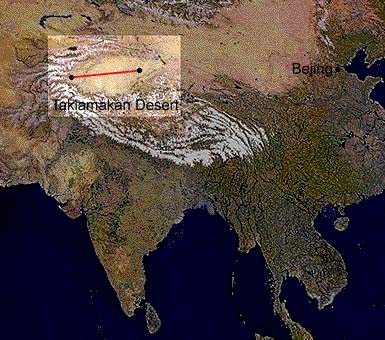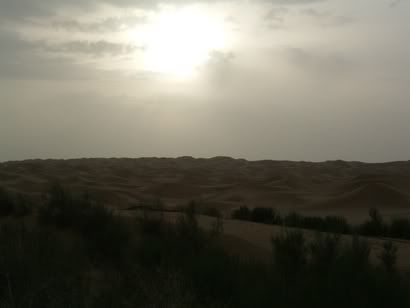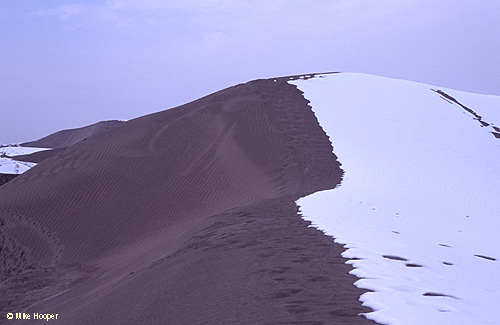
The Taklamakan (also Taklimakan) is a desert of Central Asia, in the Xinjiang Uighur Autonomous Region of the People's Republic of China. Some references state that Taklamakan means "if you go in, you won't come out"; others state that it means "Desert of Death" or "Place of no return". .
"Makan" is a Turkic word meaning "place", of Arabic origin: the word may mean something different if treated as original pre-Islamic native Turkic.
It covers an area of 270,000 km² of the Tarim Basin, extending between roughly 78° to 88° E longitude and 37° to 40° N latitude. It is crossed at its northern and at its southern edge by two branches of the Silk Road. The key oasis towns are Kashgar, Yarkand, and Khotan (Hetian) in the South-West, Kuqa and Turfan in the North, and Loulan and Dunhuang in the East.
The White Jade River flows into the Taklamakan.
The archeological treasures found in its sand buried ruins point to Tocharian, early Hellenistic, and Indian/Buddhistic influences. Its treasures and dangers have been vividly described by Aurel Stein, Sven Hedin, Albert von Le Coq, and Paul Pelliot.
Numerous mummies, some 4000 years old, have been found in the region. They show the wide range of peoples who have passed through. Many of the mummies appear European and may have been members of the Tocharian people, who spoke an Indo-European language.
Later, the Taklamakan was inhabited by Turkic peoples. Starting with the Tang Dynasty, the Chinese periodically extended their control to the oasis cities of the Taklamakan in order to control the important silk route trade across Central Asia. Periods of Chinese rule were interspersed with rule by Turkic and Mongol and Tibetan peoples. The present population consists largely of Turkic Uyghur and Kazakh people in the countryside, while the population of the larger cities is predominantly Han Chinese.
Bruce Sterling has written a science fiction short story titled Taklamakan and set in this desert.
Some photo of Taklamakan:-







No comments:
Post a Comment